Harriers are medium-sized dogs weighing between 34 to 67 pounds and standing 19 to 21 inches tall.
Harrier
Breed Type: Hound
Common nicknames: Harehound
Coat: Double
Hypoallergenic: No, they will likely trigger allergies.
Temperament: Gentle, playful, energetic, outgoing
Life expectancy: 12-15 years
Color & patterns: Brown

With their medium-sized build and expressive eyes, the Harrier is as adorable as they are outgoing. Harriers are known for their keen sense of smell and exceptional tracking abilities, which makes them excellent hunting and scent dogs, and their overall energetic and friendly dispositions. Beyond their working abilities, these dogs are also loving and affectionate, forming strong bonds with their families. If you're looking for a lively and devoted pup, the Harrier could be the breed for you.
Harrier characteristics
Learn about about Harrier basics like their fur colors, shedding levels, how much grooming they need, and other Harrier facts.
Average height
19-21 inches (48.3-53.3cm)
Average weight
34-67 pounds (15.4-30.4 kg)
Average lifespan
12-15 years
Exercise needs
Grooming needs
Full-grown size
Good with cats
Good with kids
Training aptitude
When do Harriers stop growing?
Harriers stop growing between 12 and 18 months. They will continue to fill out and gain muscle mass after this time, but they reach their full height around their first birthday.
What colors do Harriers come in?
The Harrier is often tricolor but can also come in a wide variety of colors, including lemon and white and red and white.
Do Harriers shed?
Yes, Harriers shed, but not much. They are low-shedding dogs due to their short, dense coats.
Harrier temperament
Learn about about the Harrier temperament and how well they fit into your lifestyle, home environment, and family.
Are Harrier dogs good pets?
Yes, Harriers make great pets. They have energetic and playful temperaments but are also loving and affectionate; this breed forms strong bonds with their families. If you’re looking for a lively and devoted pup, the Harrier could be the breed for you.
Do Harrier dogs bark a lot?
Yes, Harriers bark. Like most hound breeds, Harriers are fond of using their voice to communicate and are known to howl or bay as well. As with any dog, however, they can be discouraged from barking as frequently with proper training and exercise.
Are Harriers good family dogs?
Yes, Harriers are good family dogs. They are incredibly social and outgoing dogs who have a great sense of humor and love children. They need plenty of physical activity and will need to always be kept on-leash because, as a hound, they will follow their noses to the ends of the earth.
Are Harriers easy to train?
Yes, Harriers are relatively easy to train. These intelligent dogs will respond well to positive reinforcement and motivation — namely, treats. Their independent nature may make them stubborn at times, so consistent and patient training is important. Keep sessions short and full of praise for what your Harrier is doing right. Also, keep in mind that even if a certain dog breed is known to be easy to train, training any dog requires a long-term commitment.
Are Harrier dogs affectionate?
Yes, Harrier dogs are affectionate. They form strong bonds with their families and enjoy spending time with their loved ones, whether that means playing outside (their favorite) or snuggling on the couch.
Are Harriers good with kids?
Yes, Harriers are good with kids — some say wonderful. Both gentle and playful, these tolerant pups can handle the unpredictable behavior of children.
As with any breed, it is recommended that your child is always supervised when interacting with your dog to keep both the child and dog safe. Teaching children how to properly approach and handle dogs is crucial to ensure positive experiences for both the dog and the child, as is teaching dogs how to interact gently with children.
Are Harriers good with cats?
No, Harriers aren’t especially good with cats. Harriers are bred to chase small, furry things, so they don’t make the best roommate to a cat they weren’t raised alongside.
Harrier health
Learn about about the Harrier health outlook and what diseases they may be prone to at various stages of their life.
Do Harriers have a lot of health problems?
No, Harriers do not have a lot of health problems. Like most of the more ancient breeds, Harriers are a very robust and healthy breed.
What diseases are Harriers prone to?
Harriers are prone to some diseases, including:
Hip and/or elbow dysplasia: Hip and elbow dysplasia are two of the most common skeletal diseases seen in dogs. They are similar diseases in which either the hip or elbow joint has grown abnormally or is misshapen. The abnormal shape prevents the joints and sockets from adequately meeting one another, resulting in rubbing and grinding instead of sliding smoothly. Though the main complication with hip dysplasia is joint instability, the abnormalities present in elbow dysplasia often result in pieces of bone and/or cartilage breaking loose and irritating the joint tissues. Over time, the rubbing from dysplasia can cause a variety of issues, such as pain, lameness, and secondary osteoarthritis. Surgery can fix the joint if diagnosed before the onset of arthritis. If you are rescuing a Harrier, have them checked out by a vet to see if they are prone to dysplasia.
Epilepsy: This disorder causes seizures.
Perianal fistula: This is a progressive inflammation of the rectal region, which can cause diarrhea, constipation, and discomfort.
Others: Ear infections.
To identify some of these issues, a veterinarian may recommend hip, ear, and imaging tests for the dog.
Do you need to groom a Harrier?
Yes, you should groom a Harrier, but grooming this breed is very low-maintenance. The occasional brushing to remove excess hair is all this breed requires.
How long do Harriers live?
Harriers live 12 to 15 years. Like all breeds, their longevity is influenced by genetics, diet, exercise, and overall health care. Regular veterinary check-ups and a healthy lifestyle contribute to a Harrier’s long and healthy life.
Harrier history
Learn about where this Harrier came from!
Where are Harriers from?
Harriers are from England, where their history dates back to the Middle Ages. Harriers were primarily developed for hunting, specifically for tracking and chasing hares, hence the name “Harrier.” Their lineage includes various hound breeds, including the Bloodhound and the Foxhound.
How rare is a Harrier dog?
Harriers are rare, especially outside of their native England. While they have a dedicated following among hunting enthusiasts, their popularity as companion pets is not as widespread as some other breeds.
Popular Harrier mixes
Breeds that are commonly mixed with Harriers include:
Bluetick Coonhound Harrier (Harrier + Bluetick Coonhound)
Beagle Harrier (Harrier + Beagle)

Find Harrier puppies near you
Adopting a Harrier
We don't see any Harriers available for adoption in your exact location or cities near you, but here are some adorable similar breeds in Columbus, OH.

Oppe (Jewel's Gems)
Beagle Pit Bull Terrier
Male, 4 mos
Lewis Center, OH
Good with dogs
Good with cats
Needs special attention
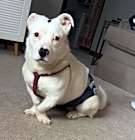
Tommy
Basset Hound Terrier (Unknown Type, Small)
Male, 1 yr 4 mos
Lewis Center, OH
Not good with dogs
Not good with cats
Spayed or Neutered
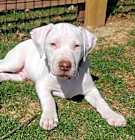
Howie (Jewel's Gems)
Beagle Pit Bull Terrier
Male, 4 mos
Lewis Center, OH
Good with dogs
Good with cats
Needs special attention
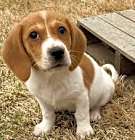
ABBY
Basset Hound Beagle
Female, puppy
Columbus, OH
Good with dogs
Good with cats
House-trained
Shots are up-to-date
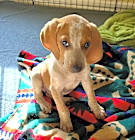
THEO
Beagle Basset Hound
Male, puppy
Columbus, OH
Good with dogs
Good with cats
House-trained
Shots are up-to-date
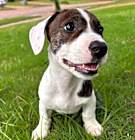
LEWIS
Beagle Dachshund
Male, 2 mos
Columbus, OH
Good with dogs
Good with cats
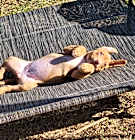
ANA
Beagle Dachshund
Female, 3 mos
Columbus, OH
Good with dogs
Good with cats
House-trained
Shots are up-to-date

BUTTERCUP
Beagle Beagle
Female, 2 yrs
Columbus, OH
Good with dogs
Good with cats
Spayed or Neutered

Oppe (Jewel's Gems)
Beagle Pit Bull Terrier
Male, 4 mos
Lewis Center, OH
Good with dogs
Good with cats
Needs special attention

Tommy
Basset Hound Terrier (Unknown Type, Small)
Male, 1 yr 4 mos
Lewis Center, OH
Not good with dogs
Not good with cats
Spayed or Neutered

Howie (Jewel's Gems)
Beagle Pit Bull Terrier
Male, 4 mos
Lewis Center, OH
Good with dogs
Good with cats
Needs special attention

ABBY
Basset Hound Beagle
Female, puppy
Columbus, OH
Good with dogs
Good with cats
House-trained
Shots are up-to-date

THEO
Beagle Basset Hound
Male, puppy
Columbus, OH
Good with dogs
Good with cats
House-trained
Shots are up-to-date

LEWIS
Beagle Dachshund
Male, 2 mos
Columbus, OH
Good with dogs
Good with cats


